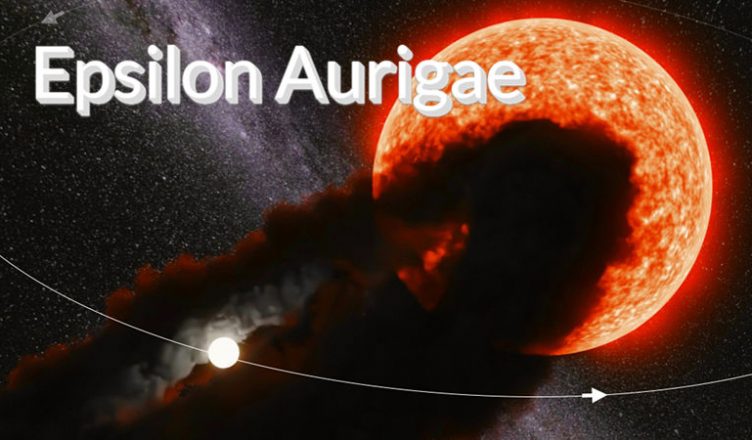Epsilon Aurigae, a star system located 1,600 light-years away from Earth, has captivated astronomers for over two centuries due to its baffling and enigmatic behavior. This celestial anomaly, which dates back to the early 19th century, left scientists perplexed and puzzled. At the time, the field of astronomy was still in its infancy, and the periodic fluctuations in the star’s brightness defied explanation. It wasn’t until 1903 that astronomers made a significant breakthrough by observing this mysterious celestial object, uncovering a long-lasting puzzle that had endured for nearly two hundred years. Let’s delve into the extraordinary mysteries surrounding Epsilon Aurigae and the recent astonishing revelations that have finally provided answers to the riddles that have confounded scientists for generations.
Unraveling a Two-Century Enigma: Astounding Discovery in the Epsilon Aurigae Binary Star System
Two centuries ago, around 1821, a German amateur astronomer made a perplexing observation – a star’s brightness dimmed by 2.5 times with periodic fluctuations, leaving astronomers puzzled in the early stages of 19th-century astronomy. Back then, the periodic variations in brightness could not be fully explained. Fast forward to 1903, when astronomers closely monitored this star, they noticed a prolonged decrease in brightness for about half a year, followed by nearly a year of dimness. Afterward, it gradually returned to its original luminosity. This enigmatic star is known as Epsilon Aurigae, and it has been the subject of astronomers’ study for a very long time.
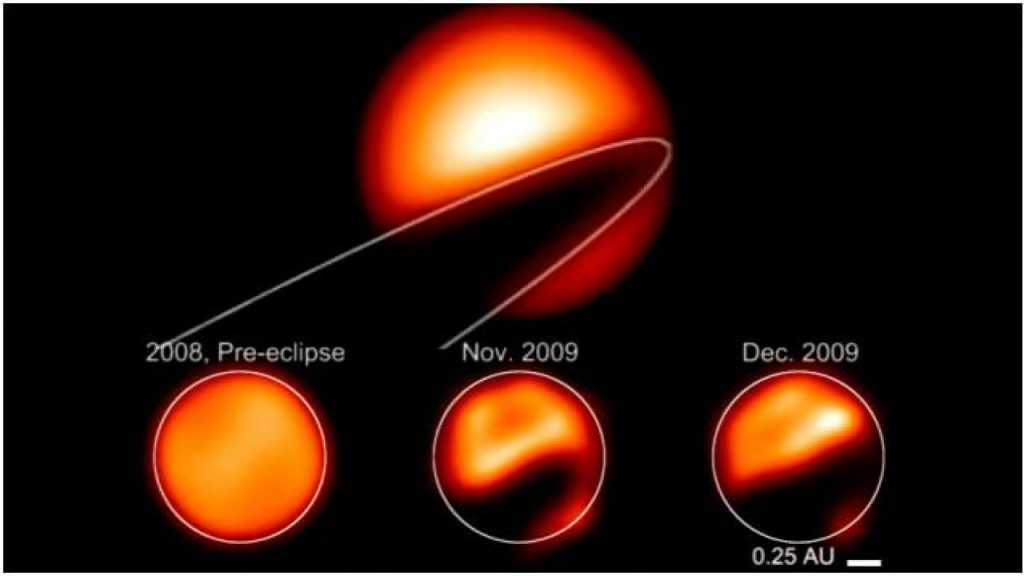
However, only recently have scientists found an explanation for this celestial puzzle that has baffled them for nearly 200 years. American astronomers discovered a peculiar signal within the Epsilon Aurigae system, which we already knew to be a binary star system. The latest observations unveiled that this binary system is, in fact, quite compact, with material exchange occurring between the two stars. Two centuries ago, astronomers were confounded by the strange dimming process of Epsilon Aurigae, not realizing that it was not just one star but two. Observations from the European Gaia mission revealed that these two stars were exchanging matter, explaining the intermittent fluctuations over the past 200 years.
Prior to this revelation, scientists speculated about the causes of the periodic dimming phenomenon, ranging from a passing meteor shower to a stellar black hole or other unknown substances. It was only in 2010 that astronomers began to suspect the presence of two stars in the system, surrounded by a substantial amount of gaseous clouds.
The Epsilon Aurigae celestial system initially raised questions due to the colossal size of its stars. Astronomers initially believed the stars to be 3,000 times the size of the Sun, possibly making them some of the largest stars in the universe. However, recent observations have revised these estimates, suggesting that the two stars have masses approximately 15 and 12 times that of the Sun. This system is highly dynamic, with the stars actively exchanging matter, primarily with the larger star drawing material from the smaller one.
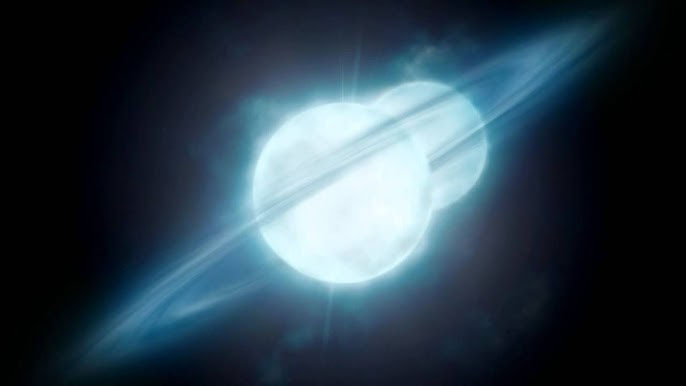
The latter star is slightly larger and hotter than the Sun. These supergiants belong to the largest family of stars in the universe, with masses that can effortlessly reach up to 100 times that of the Sun. Despite using instruments like the Spitzer Space Telescope and the Herschel Space Observatory, precise mass data were not available until the European Space Agency’s Gaia mission. This mission aimed to chart information on a billion stars within the Milky Way, and evidently, the Epsilon Aurigae celestial system, located just 1,600 light-years away from us, was included in this endeavor. Consequently, the mystery that has perplexed scientists for nearly two centuries has finally been unraveled.
Mysterious Star VISTA Variables in the Via Lactea (VVV-WIT-08)
Located approximately 25,000 light-years away from us, there exists a red giant star named VVV-WIT-08, with an estimated age of around 8 billion years. In early 2012, scientists, through the VISTA Variables in the Via Lactea (VVV) survey, observed a gradual decrease in the brightness of VVV-WIT-08. By April of the same year, it had dimmed by a staggering 97%, rendering it nearly invisible in both visible and infrared light. However, over time, this colossal star gradually reclaimed its former brilliance.
While fluctuations in the brightness of stars are not uncommon, they are typically attributed to companion stars or massive planets passing in front of the star, causing a slight reduction in luminosity. What makes VVV-WIT-08 extraordinary is the prolonged duration of its dimming, lasting approximately 200 days. Evidently, any object capable of obstructing the radiance of a distant star for an extended period must be extraordinarily large – at least much larger than the star itself – and entirely opaque to block out most of the starlight.
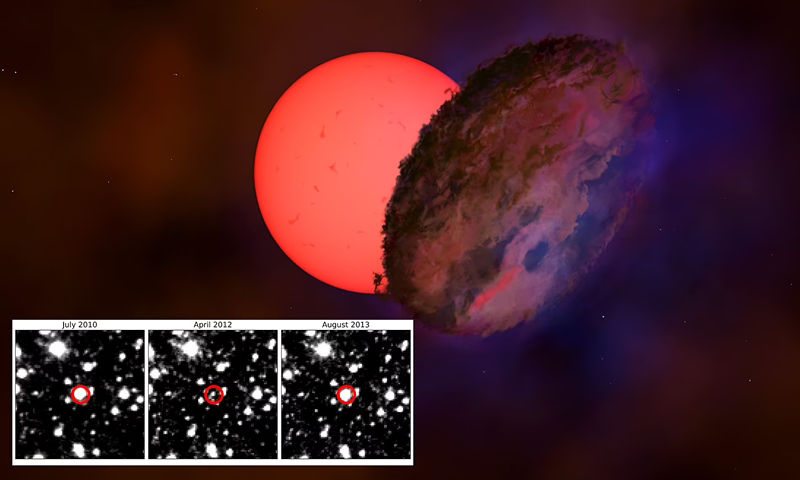
Similar cases have been recorded in scientific literature, such as Epsilon Aurigae, also known as “Cyzar One,” located 2,200 light-years away from Earth, which undergoes a 50% dimming approximately every 27 years, with each dimming event lasting between 640 to 730 days. Another example is the binary star system TYC 2505-672-1, where one of its stars dims every 69 years, with the eclipse lasting as long as 3.5 years.
Current models predominantly speculate that the object obstructing the star’s radiance is a massive, non-transparent disk of orbital dust, with a thickness of up to 3,700 kilometers. Other theories suggest that the disk of debris may be produced by a white dwarf or a black hole or formed by material stripped from the star itself.
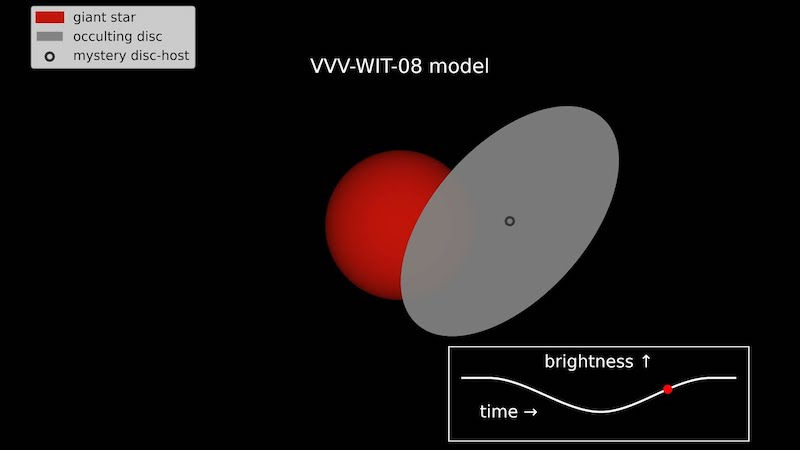
Now, led by Cambridge University Institute of Astronomy astronomer Leigh Smith, an international team has proposed that VVV-WIT-08 likely belongs to a novel category of binary star systems. In this scenario, one star is a giant, roughly 100 times the size of the Sun, periodically eclipsed by an as-yet-unseen companion star, surrounded by an opaque circular disk.
Currently, around six of these new-type binary star systems are known, and astronomers’ greatest challenge lies in unraveling the nature of the hidden companion star and why it is encircled by a disk. While some may be eager to entertain the idea of extraterrestrial entities passing in front of this star, researchers assert that this hypothesis is not mature enough for serious consideration.
END:
As we conclude this journey into the enigmatic world of Epsilon Aurigae, we find ourselves at the precipice of exciting new possibilities. The recent revelations about this binary star system have opened doors to a deeper understanding of celestial phenomena. With the aid of cutting-edge technology and the tireless dedication of astronomers and researchers, we can anticipate even more remarkable discoveries in the future.
Epsilon Aurigae’s complex dance of stars, with their intricate exchange of materials, holds the potential to offer insights into the birth and evolution of stars and the mysterious forces that govern them. It serves as a testament to the boundless curiosity of the scientific community, driving us to explore the universe’s most perplexing mysteries.
As our understanding of this captivating celestial system continues to evolve, we can look forward to a future where Epsilon Aurigae not only sheds light on its own secrets but also contributes to our broader comprehension of the cosmos. The mysteries of the universe are vast, and Epsilon Aurigae is but one piece of the grand cosmic puzzle. With each revelation, we inch closer to unraveling the tapestry of the stars and the secrets they hold. The future promises to be an exciting and illuminating journey for astronomers and stargazers alike.
More UFOs and mysterious files, please check out our YouTube channel: MysFiles
Lacerta Files: Human beings are the product of genetic engineering by alien civilizations.
